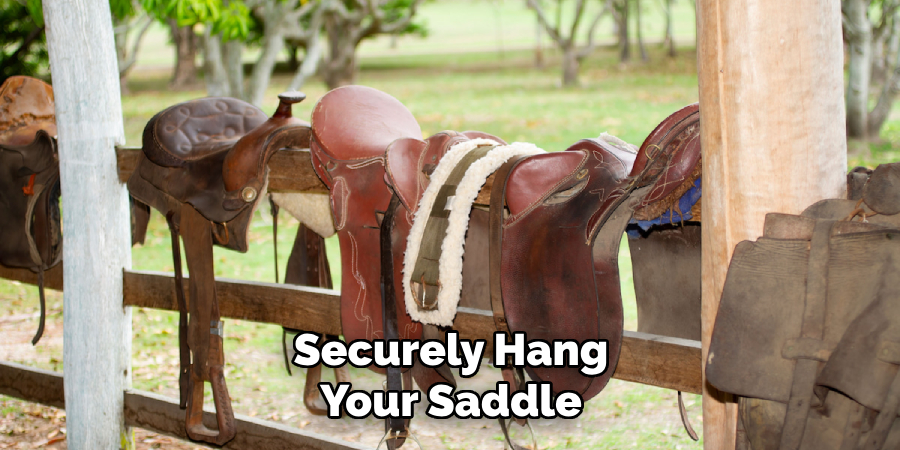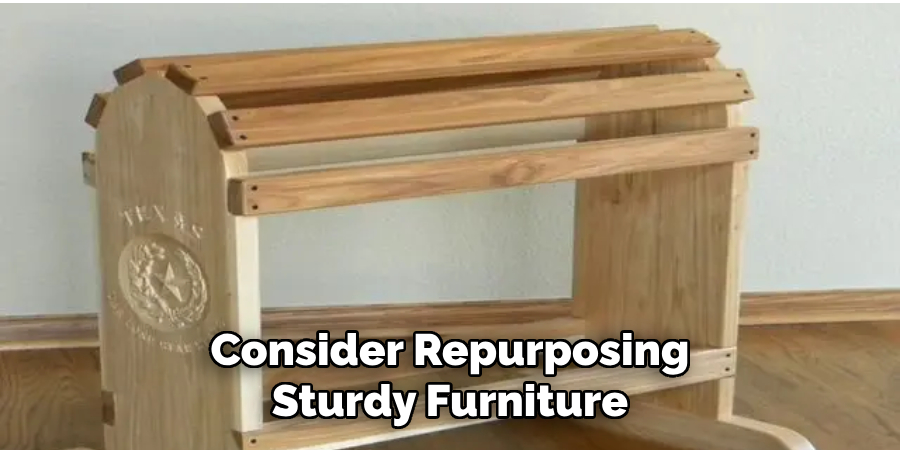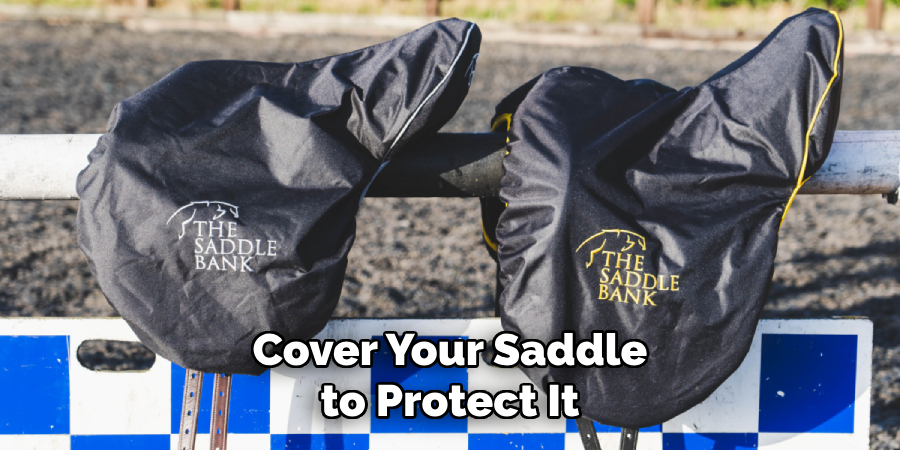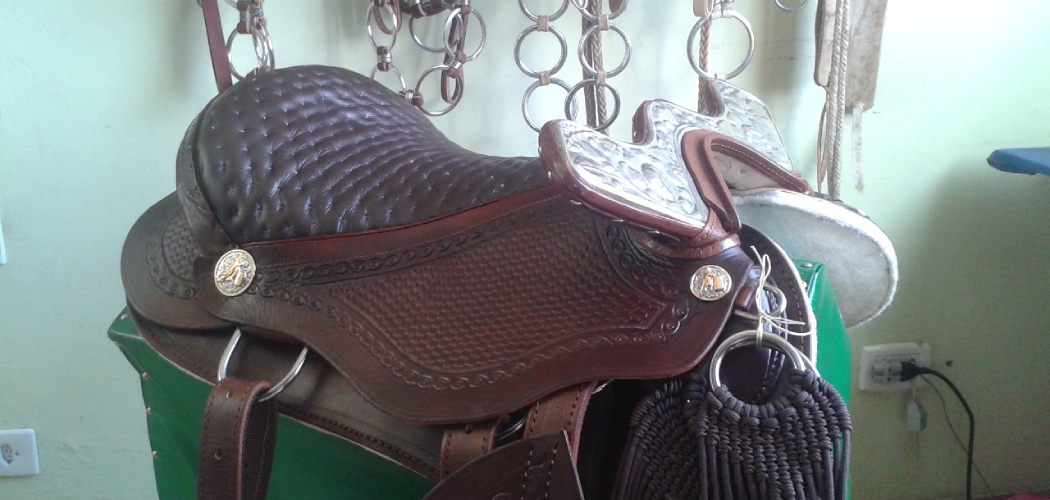Properly storing a saddle is essential for preserving its quality and longevity, but not everyone has access to a traditional saddle rack. Whether you’re a horse owner with limited space or a rider on the go, finding alternative storage solutions is key. Safeguarding your saddle from damage, moisture, and deformity is a priority, regardless of the absence of a rack.

In this article, we delve into ingenious methods and tips for how to store a saddle without a rack. From utilizing wall mounts, repurposing household items, to maximizing vertical space, we’ll explore creative ways to ensure your saddle remains in optimal condition.
Discover how to maintain the value of your saddle investment while adapting to your unique storage situation, no matter how constrained it may be.
Importance of Proper Saddle Storage
Good saddle storage is essential in extending the life and usefulness of your equipment. A well-cared for saddle will last longer than one that was improperly stored, which can lead to a variety of costly repairs.
If you don’t have a saddle rack, don’t worry — it’s still possible to store your saddle safely and securely without one. Once you understand the basics of saddle storage, you’ll be able to keep your saddle in good condition for years to come.
Common Challenges of Limited Storage Space
If you’re like most horse owners, you likely don’t have a lot of extra storage space. It can be especially tricky to figure out how to store your saddle without taking up valuable real estate in your barn or tack room. Fortunately, there are some creative solutions that will keep your saddle safe and secure without using up too much space.
One great way to store a saddle without a rack is to hang it from the ceiling. This is especially convenient if you have tall ceilings or exposed beams, as hanging the saddle won’t take up any floor space.
To securely hang your saddle, use heavy-duty hardware such as eye hooks and commercial grade rope or chain. It’s important that you find strong enough hardware that will support the weight of the saddle without sagging or stretching.

Another great option for storing a saddle without a rack is to use wall-mounted hooks. This works best with lightweight saddles, as heavier saddles may require more support than just one hook can provide. You’ll want to make sure you find strong and reliable wall hooks that are designed to hold heavy objects like saddles.
Finally, if you need to save on space but still want a secure place to store your saddle, consider using a storage box or trunk. These can be found in many shapes and sizes, so whether you have limited wall space or just need something that will fit in a corner of your tack room, there’s sure to be an option for you. If you don’t have an existing box, you can also make your own with wood boards and a few nails.
10 Steps How to Store a Saddle without a Rack
1. Clean and Condition:
Before storing your saddle without a rack, it’s essential to prepare it for storage by cleaning and conditioning it. Over time, saddles can accumulate dirt, sweat, and oils from both the horse and the rider. Use a damp, soft cloth to gently wipe down the saddle’s surface, removing any visible dirt or grime.
Pay attention to seams, crevices, and stitching, as these areas can harbor debris. After cleaning, apply a high-quality leather conditioner to nourish the leather and prevent it from becoming dry and brittle. Conditioning the leather also helps maintain its flexibility and prevents cracking. Allow the conditioner to be absorbed fully before proceeding to the next steps.

2. Choose a Suitable Location:
When considering where to store your saddle without a rack, prioritize a suitable location that will protect the leather from damage. The ideal storage space should be dry, cool, and free from direct sunlight.
Extreme heat or humidity can negatively affect the leather’s integrity, leading to warping, fading, and mold growth. Avoid storing your saddle in basements, attics, or areas prone to temperature fluctuations. A climate-controlled room, a tack room, or even a closet can serve as excellent storage options.
3. Utilize Wall Mounts:
Wall-mounted saddle racks or hooks offer an effective solution for storing your saddle without a traditional rack. These racks can be easily installed on a wall or sturdy surface using screws or mounting hardware.
Choose a location that is easily accessible yet out of the way, ensuring that the saddle is hung at an appropriate height to prevent unnecessary strain on the leather. Wall mounts not only keep the saddle off the ground but also maximize vertical space, making them a practical choice for those with limited storage options.
4. Repurpose Sturdy Furniture:
If wall mounts are not an option, consider repurposing sturdy furniture to create a makeshift saddle storage area. Dressers, tables, or even sturdy shelving units can be used to provide a safe resting place for your saddle.

Place a soft saddle pad or cloth on top of the furniture to cushion the saddle and protect it from any hard surfaces. Ensure that the furniture piece is stable and won’t tip over, posing a risk to both the saddle and anyone nearby.
5. Hang from a Beam or Bar:
If you’re fortunate enough to have access to beams or bars in your storage area, hanging your saddle can be an effective solution. Use adjustable straps or ropes to suspend the saddle securely. Hanging the saddle prevents it from coming into contact with the ground, reducing the risk of dirt accumulation. However, make sure that the hanging method is well-balanced and won’t create stress points on the saddle’s structure.
6. Stack with Care:
When alternative storage options are limited, you can choose to stack your saddle on a clean and padded surface. Place the saddle on a saddle pad or cloth to prevent direct contact with the ground.
However, exercise caution when stacking saddles, as excessive weight from stacking can distort the shape of the lower saddle. Avoid placing heavy objects on top of the saddle, as this could lead to deformation over time. To further protect your saddle from dust, cover it with a breathable cloth or saddle cover.
7. Use a Wooden Stand:
Craft a simple wooden saddle stand to provide stable support for your saddle. A wooden stand can be designed to resemble a miniature saddle rack, with arms that hold the saddle securely. Creating a stand requires basic woodworking skills and materials, but it offers a reliable way to keep your saddle off the ground while maximizing limited storage space.
8. Invest in a Foldable Stand:
Foldable saddle stands are specifically designed for convenience and portability. These stands can be assembled and disassembled as needed, making them an excellent option for those who require flexible storage solutions.
Foldable stands provide a stable resting place for your saddle, even without a dedicated rack. They are particularly useful for individuals who travel with their saddles or need to frequently rearrange their storage space.
9. Avoid Plastic Covers:
While it’s important to cover your saddle to protect it from dust, moisture, and pests, avoid using plastic covers. Plastic covers can trap moisture and create a humid environment within the cover, leading to the growth of mold and mildew on the leather.

Instead, opt for a breathable saddle cover made from fabric or leather. A breathable cover allows air circulation, preventing the buildup of moisture and promoting a healthy environment for the saddle.
10. Rotate the Saddle:
Even when using alternative storage methods, it’s advisable to periodically rotate the saddle’s position. By doing so, you distribute the pressure exerted on specific areas of the saddle, preventing the formation of indentations or imprints.
Regularly rotating the saddle ensures that it maintains its shape and integrity throughout the storage period. If possible, hang the saddle upside down for a few days every month to ensure even weight distribution.
When not in use, it’s also important to keep your saddle clean and dry. Wipe down the leather with damp cloth after each use, followed by an application of leather conditioner.
Conclusion
In conclusion, finding a safe place to store your saddle without having to purchase a rack is indeed possible. With the right materials and tools at your disposal, you’ll be able to create an adequate safe storage solution that will keep your saddle secure and in great condition for years to come.
Remember that a good maintenance routine is key in caring for any quality equine equipment; a little effort now can help spare large expenses down the road! When it comes time for packing up and moving on, following these steps, you’ll have no problem wrapping things up with ease.
So let us round off on a practical note: take the time to understand how to store a saddle without a rack today and always enjoy the peace of mind that comes from preserving one of your most prized possessions!

